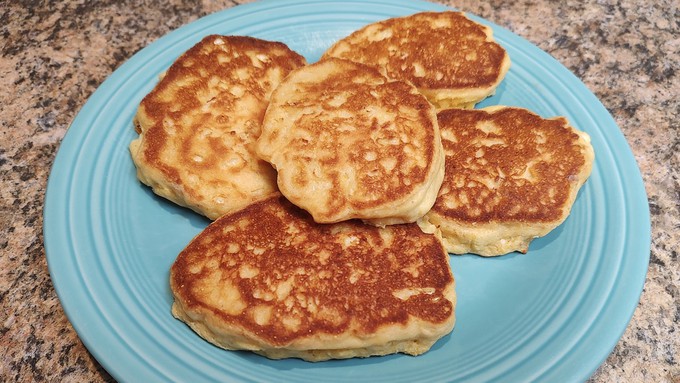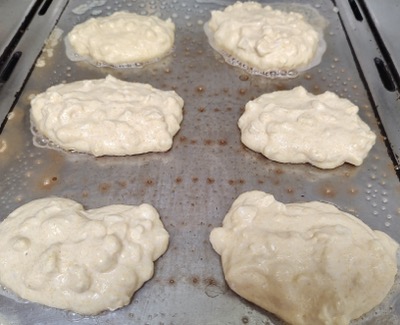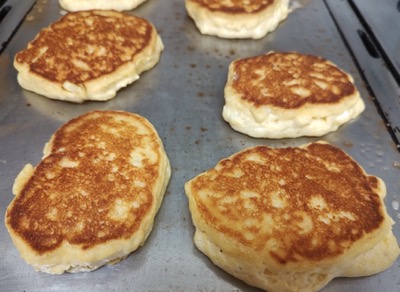
Recipe: Fresh corn cakes use whole kernels

Made with fresh corn cut from the cob, these cakes could be topped with butter and syrup for breakfast, or sour cream and salsa for an appetizer or side dish. Debbie Arrington

Celebrate fall and the last corn of the season with hearty corn cakes.
These corn cakes are packed with flavor and crunch – thanks to the addition of fresh corn kernels. (Frozen corn will work, too.) One large ear yields about one cup of kernels.
Corn cakes aren’t just for breakfast. They also work as a side dish or even an appetizer; make them small and top with salsa and sour cream.
Fresh corn cakes
Makes about 8 corn cakes
Ingredients:
½ cup flour
½ cup corn meal
1 teaspoon baking powder
½ teaspoon baking soda
½ teaspoon salt
½ cup sour cream or plain yogurt
½ cup milk
1 egg
2 tablespoon butter or margarine, melted and cooled
1 cup corn kernels
Butter or margarine for griddle

Instructions:
In a large bowl, sift together flour, corn meal, baking powder, baking soda and salt.
In a smaller bowl, mix together sour cream or yogurt, milk and egg.
Add milk-egg mixture to dry ingredients and stir until smooth. Add melted butter or margarine. Fold in corn kernels. Batter will be lumpy.
Heat griddle to 350 degrees F.; melt butter or margarine.
Using a ladle or ½-cup measuring cup, scoop batter on to griddle. Cook until golden brown, turning once (about 3 or 4 minutes per side).
Serve hot with butter or margarine and warmed honey or maple syrup, if desired.
These corn cakes are also good with sour cream and salsa.
Comments
0 comments have been posted.Sacramento Digs Gardening to your inbox.
Sites We Like
Garden Checklist for week of July 21
Your garden needs you!
* Keep your vegetable garden watered, mulched and weeded. Water before 8 a.m. to reduce the chance of fungal infection and to conserve moisture.
* Feed vegetable plants bone meal, rock phosphate or other fertilizers high in phosphate to stimulate more blooms and fruiting. (But wait until daily high temperatures drop out of the 100s.)
* Don’t let tomatoes wilt or dry out completely. Give tomatoes a deep watering two to three times a week.
* Harvest vegetables promptly to encourage plants to produce more. Squash especially tends to grow rapidly in hot weather. Keep an eye on zucchini.
* Pinch back chrysanthemums for bushy plants and more flowers in September.
* Remove spent flowers from roses, daylilies and other bloomers as they finish flowering.
* Pinch off blooms from basil so the plant will grow more leaves.
* Cut back lavender after flowering to promote a second bloom.
* It's not too late to add a splash of color. Plant petunias, snapdragons, zinnias and marigolds.
* From seed, plant corn, pumpkins, radishes, winter squash and sunflowers.